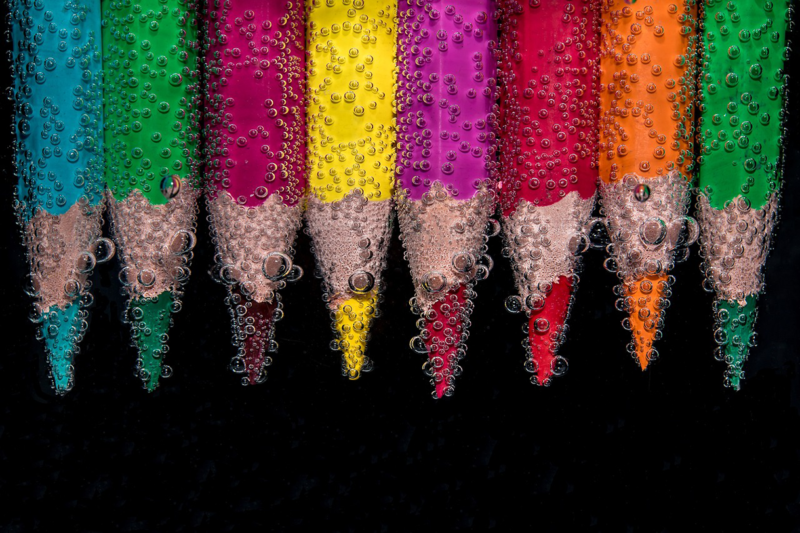The Psychology of Color: How It Affects Your Mood and Decisions
October 26, 2024

Color is an integral part of our lives, influencing our emotions, thoughts, and behaviors in ways we often don’t even realize. From the colors we choose in our clothes to the shades that fill our living spaces, color has a profound psychological impact. In this article, we’ll explore the psychology of color, how it affects our mood and decisions, and how you can use it to your advantage.
1. Understanding the Basics of Color Psychology
Color psychology is the study of how colors affect human behavior and emotions. Different colors can evoke different feelings, sometimes subtly and sometimes profoundly. For instance, the color red can increase heart rate, while blue can have a calming effect. Understanding these associations can help in making conscious choices in various aspects of life.
- Warm Colors: Colors like red, orange, and yellow are associated with warmth, energy, and stimulation.
- Cool Colors: Shades like blue, green, and purple tend to have calming and relaxing effects.
- Neutral Colors: Colors like black, white, and gray often serve as grounding colors that balance out other hues.
These general associations form the basis of color psychology, guiding the use of colors in everything from advertising to interior design.
2. How Colors Influence Mood
Our moods are highly susceptible to the colors around us. This is why color choices in settings like hospitals, schools, and workplaces are carefully considered. Here are some common mood associations for various colors:
- Red: Often linked to excitement, passion, and urgency, red can stimulate energy levels but may also increase stress or aggression in high doses.
- Blue: Known for its calming effects, blue can promote feelings of peace and trust. It’s frequently used in bedrooms and workspaces to foster a tranquil environment.
- Yellow: Associated with happiness and positivity, yellow can uplift mood. However, too much yellow may lead to feelings of anxiety.
- Green: Symbolizing nature and balance, green is both soothing and refreshing, often used in spaces meant for relaxation.
- Purple: Linked to creativity and luxury, purple can inspire imaginative thinking and is often used in spaces where creativity is encouraged.
Knowing these associations can help you create environments that support desired emotional states, whether you’re decorating a home or planning an event.
3. The Role of Color in Decision Making
Color can significantly influence decision-making processes, often subconsciously. For example, in marketing and branding, color choices can impact how a product is perceived and whether customers feel compelled to buy it.
- Red in Marketing: Red can create a sense of urgency, making it effective for sale signs or call-to-action buttons in advertising.
- Blue in Branding: Many banks and technology companies use blue in their logos because it conveys trustworthiness and reliability.
- Green for Health and Wellness: Green is commonly used by brands in the health and wellness sectors, as it represents health, nature, and well-being.
- Black for Luxury Products: Black signifies elegance and sophistication, making it a popular choice for high-end brands.
These strategic color choices tap into consumers’ emotions and motivations, subtly influencing their decisions and behaviors.
4. Cultural Differences in Color Perception
The psychological effects of color are not universal; different cultures perceive colors in unique ways. For example, while white symbolizes purity in Western cultures, it represents mourning in some Asian cultures. Here are a few examples of how color meanings vary around the world:
- Red: In China, red symbolizes good fortune and happiness, while in Western cultures, it may represent love or danger.
- White: White signifies purity and weddings in the West but is associated with funerals and mourning in India and China.
- Green: Green often symbolizes nature and tranquility, but in some Middle Eastern countries, it holds religious significance, representing prosperity and fertility.
Considering cultural context is essential when choosing colors in global branding or multicultural environments.
5. Using Color in Everyday Life
Color psychology can be applied to various aspects of daily life, from home decor and clothing choices to personal branding and productivity.
- Interior Design: Use blue and green in relaxation spaces like bedrooms and living rooms, while yellow or orange may be better suited for kitchens and creative spaces.
- Workspaces: Incorporate colors like blue and green to foster concentration and reduce stress, or use red accents to stimulate energy in areas requiring high activity.
- Personal Branding: Colors in your wardrobe or personal brand can convey specific messages. For example, wearing blue can signify trust and dependability, while red may convey confidence.
With an understanding of color psychology, you can make intentional choices that support your goals and enhance your surroundings.
6. The Science Behind Color and Psychology
Research in neuroscience and psychology has shown that color perception is connected to the brain’s processing of emotions. The retina in our eyes detects colors and sends signals to the brain, where associations are made based on past experiences and cultural conditioning. This process explains why people may react differently to colors.
Color and Emotions: Studies suggest that color can affect the limbic system, the part of the brain responsible for emotions. For instance, blue light has been shown to reduce stress, which is why it’s used in lighting for calming environments.
Color Temperature: Warm colors (reds and yellows) tend to increase arousal, while cool colors (blues and greens) reduce it. This temperature difference plays a role in where and how colors are used in spaces like homes, offices, and stores.
By understanding the science behind color perception, we can make more informed choices in how we interact with color.
Conclusion
Color psychology is a powerful tool that shapes our emotions, decisions, and perceptions. By harnessing the psychological effects of color, you can create environments and make choices that support positive emotional states, productivity, and well-being. Whether you’re painting a room, designing a brand, or choosing an outfit, a deeper understanding of color psychology can enhance your life in meaningful ways.








